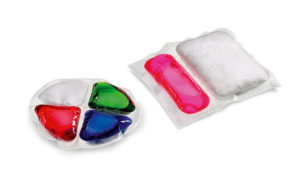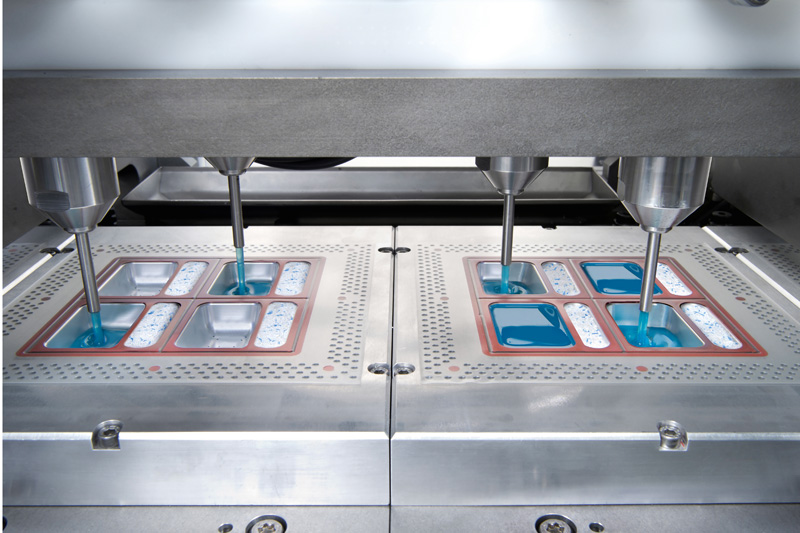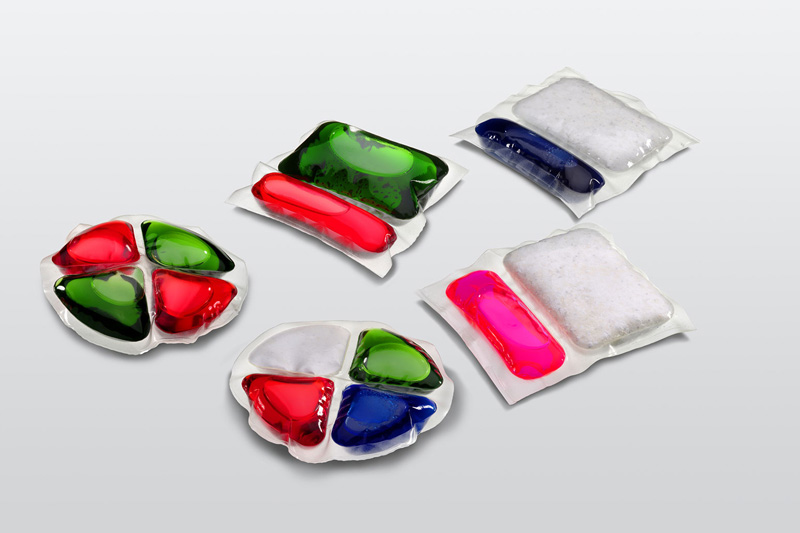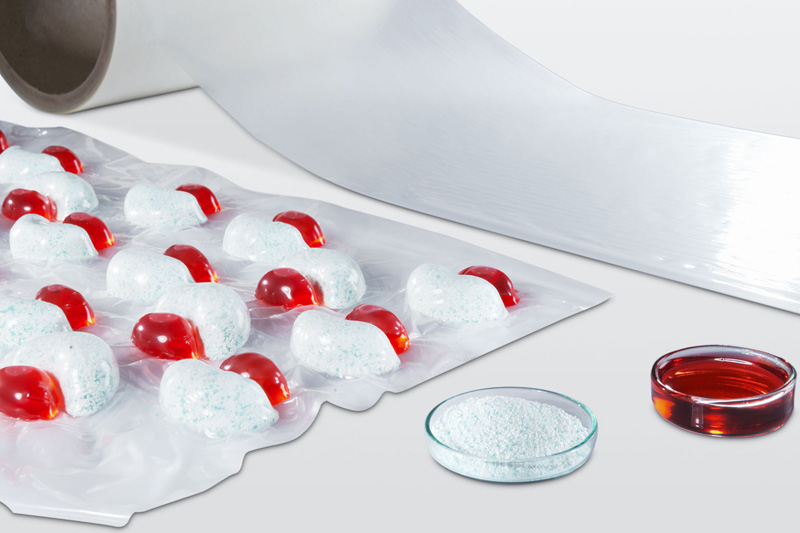P
re-dosed packs (pouches) made of water-soluble film, advertised as tabs, caps or pods, are the trend. Without unpacking, consumers can put them in the dishwasher or washing machine, where the poly vinyl alcohol film (PVOH) dissolves and releases the powder, gel or liquids. That way, consumers always use the exact quantity and mixture of detergents intended by the manufacturer, thus avoiding frequent overdosing. That is not only good for the laundry, but also protects the environment.
On the way to a detergent or dishwasher product, Harro Höfliger provides customer support from the laboratory stage to high-speed production. “The companies approach us with a design where shape, number of chambers and fill media have already been determined,” explains Jürgen Luka, Engineering & Innovation Services (EIS) Department. “For example, they want a pouch with three chambers containing 15 grams of powder, five grams of gel and five grams of liquid. Our task is to develop a machine process that is capable of bringing the film into the right shape, to precisely dose the desired fill media, seal it tight and subsequently punch it out.”
The road to the sample product
The development of the process starts with the theoretical creation of the design. To that end, Harro Höfliger calculates the required volumes, computes the machine dimensions and edits the customer’s design. Then our employees create the format parts, in most cases first with a 3D print, subsequently as a casting mold made from milled aluminum. This is followed by an analysis of the dosing processes and the product optimization. “Bulk density, flow rate and flowability are crucial for the fill media,” explains Luka. “If the powder causes too much dust and the gel flows too slowly or stops, we will search for a solution together with the customer.” Initial sample products for the customer are manufactured on Harro Höfliger’s laboratory machine. For this purpose, the engineering team first selects the appropriate PVOH-film which is thermoformed to shape and filled with the respective media. After that the filled chambers are covered with a lid film and are heat seal ed. Depending on the shape, the pouch is then punched out (special formats or round format) or cut out (square shape).
Rigorous testing
Harro Höfliger tests whether the pouches comply with the relevant regulations, and documents everything for the customer. “According to EU regulations, a detergent pouch, filled with gel or liquid, must remain tight for at least 30 seconds before dissolving,” says Jürgen Luka. “This is tested in a container with water.” The long dissolution period serves to protect children should they put a pouch in their mouth. In addition, a bittertasting compound is added to the film that triggers a disgust reflex in humans and results in spitting out the pouch. A load test makes sure that the pouches can withstand a weight of at least 100 kg, as mandated. These requirements are taken into consideration during the process development. If necessary, the products are optimized accordingly. The process which is developed on Harro Höfliger’s laboratory machines can be scaled up in identical quality to the company’s large production lines. On the high-speed machines of Harro Höfliger, up to 1,800 multiple chamber pouches per hour can be produced.
Download this article as PDF file
Photos: Helmar Lünig, Professor25iStockphoto.de






